How are Emerging Technologies Influencing the Government Agencies?

Introduction
You can look around and see countless examples of how technology is transforming an individual's life thoroughly. Day by day, technology is changing and mobile applications are changing. Pioneering organizations, including governments, realize technological forces that are beneficial to customers and citizens.
Organizations in Government and public sectors acknowledge automation’s significance that boosts work efficiency and cuts redundant costs, along with improving citizens' experience when it comes to public services.
Government and agencies embrace emerging technologies
Governments and agencies are integrating AI, blockchain, and IoT to boost efficiency, transparency, and citizen services. These technologies promise significant transformations, advancing digital agendas and innovating public services.
1. Artificial Intelligence (AI)
Artificial Intelligence have the potential to transform the government and public sector along with saving billions of dollars. From virtual desktop assistants to apps that can regulate big, shifting systems, each aspect of government operations is revolutionizing.
AI-based mobile applications can mitigate delays, cut expenditure, solve resource constraints, release employees from ordinary tasks, enhance projection accuracy, infuse intelligence into processes and systems, and control plenty of other tasks humans can’t perform comfortably on their own.
AI has a brilliant ability to improve data-driven decision-making and create valuable insights. It’s good to keep an eye on the interaction between humans and machines to identify how AI can solve particular processes.
Technology is primarily changing how the government functions. AI delivers endless possibilities to free up millions of labor hours for government workers. Daily tasks are most likely to be automated along with minimizing disruption and enabling innovations. What do government workers need more than this?
2. Blockchain
Blockchain is a record-keeping technology that has started providing value to the government sector along with banking, investing, and cryptocurrency.
A blockchain-based government model can address legacy challenges, secure confidential data of government, businesses, and citizens, reduce labor-intensive procedures, reduce expenses of account management, reduce the possibilities of corruption, and boost trust in government and online civil systems.
On a blockchain-based government module, everyone (including individuals, businesses, and governments) can share resources on a distributed ledger that is highly secured using cryptography. This system mitigates the risks of failure and secures sensitive information of citizens and the government.
3. IoT
IoT helps the development of smart cities and nations. It embellishes the infrastructure of healthcare, transportation, energy, defense, and maintenance of communities. Government organizations and employees can leverage IoT to assess the complicated aspects of city planning and management that include population surges, zone partitions, mapping, water system service, transportation structure, delivering food, social welfare, and land use.
IoT supports improved economic monitoring and modeling by making previous blind spots visible to discover growth opportunities. It also supports higher protection of borders through affordable, high-performance devices for strong control and observation.
IoT acts as a tool of law enforcement that mitigates hand-operated labor work and helps with subjective decisions through superior data, exchange of information, and progressive automation.
IoT offers top-notch analytics, improved evidence, and optimized operations to court systems that stimulate processes, remove redundant procedures, control corruption, decrease expenses, and enhance satisfaction.
4. Cloud Computing
Cloud computing provides more flexibility to government bodies compared to old-school IT infrastructures. There is no need to worry about restricted resources, purchasing servers and hardware, continuously updating software, or data security. When more space is required, the expenses of extra servers and hardware are removed with cloud computing.
The cloud streamlines collaboration among government organizations. Data and documents have their name and credentials, and only respective individuals can get permission to access them. Beyond just sharing documents, government employees and contractors have access to documents from anywhere in the world. They just need a strong internet connection to reach the cloud.
Cloud provides faster access to innovations and improved citizen services. Individuals can increase their productivity when they are away from their desks.
5. Digital Twins
Leading digital governments are analyzing the perception of digital twins at the whole-of-government level. This technology technique is emerging but advantageous. These will help government organizations to enhance decision-making and outcomes.
The blend of various technologies in Digital Twins makes extensive digital versions of real-world objects and processes to aid government agencies assess their daily performance and when they might collapse. That ultimately enhances reliability and saves expenses.
Digital twins empower predictive analytics and predictive asset maintenance that possibly enable government organizations to predict failures before they occur.
Digital twins decrease product deficiency, either by empowering organizations to develop a more reliable product/asset from the beginning or by deciding how an asset performs throughout its lifecycle and making advancements.
Looking to build a highly-secured Government App or Software?
Summing Up
The government sector has been a strong accelerator for swift digitization. Digital technologies provide substantial value towards domains like online transactions, government subsidy transfers, and procurement to improve abilities and productivity in the Government and public-sector segment. The National and state governments can compel digitization by collaborating with private organizations and placing technology at the base of their activities.





 Have an Idea?Let’s Build It Together!
Have an Idea?Let’s Build It Together!